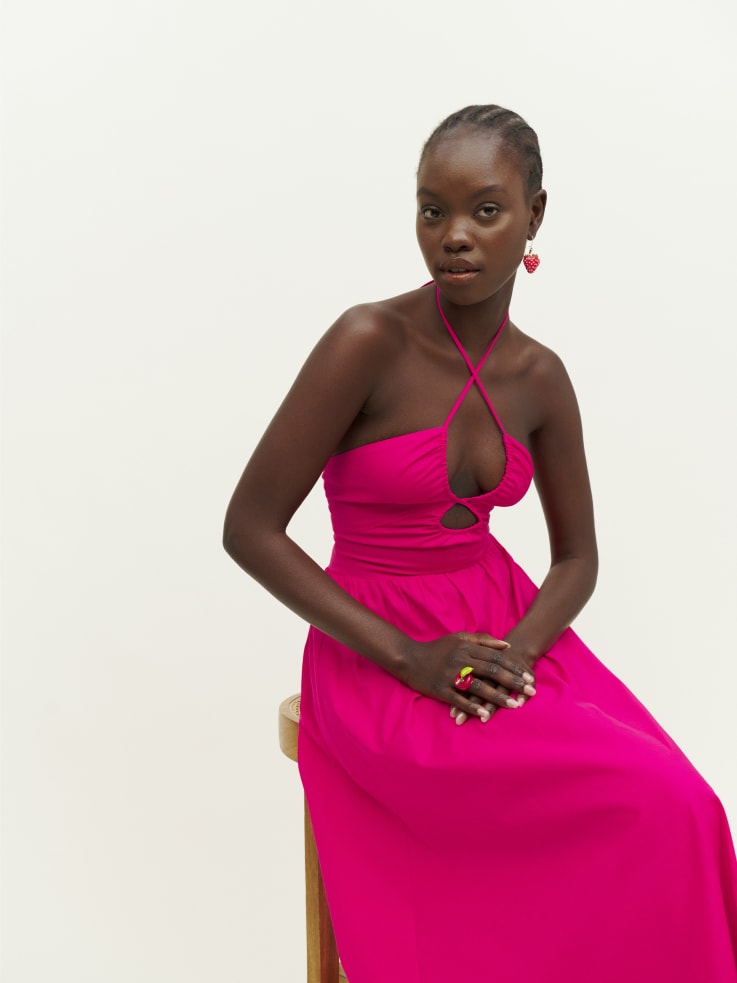Stassie Dress – Spaghetti Strap Midi Shirting/Poplin | Reformation
Strings attached. The Stassie is a sleeveless, midi length dress with a center front keyhole detail. It features a halter neckline with adjustable tie straps and a smocked back bodice. It’s a good casual option but can also be dressed up if you have to go somewhere kind of fancy.
Strings attached. The Stassie is a sleeveless, midi length dress with a center front keyhole detail. It features a halter neckline with adjustable tie straps and a smocked back bodice. It’s a good casual option but can also be dressed up if you have to go somewhere kind of fancy.
- – Adjustable halter
- – Center back zipper
- – Center front keyhole
- – Fitted bodice
- – Fitted in waist
- – Midi length
- – Ruching on bodice
- – Smocked back bodice
- – Ties at back neck
- Model is wearing a 0
- Height: 5’9
- 10 lbs. of carbon dioxide savings
- 7,949 gal. of water savings
- 0 lbs. of waste savings
Organic cotton doesn’t allow genetically modified seeds and restricts the use of many chemicals. It still uses water and land but it helps sustain the land it is grown on through crop rotations and natural ways of controlling pesticides.
This is a stretch poplin fabric made with 98% Organically Grown Cotton, 2% Spandex.
Additional information
| Height | 5'9 |
|---|






Reviews
There are no reviews yet.